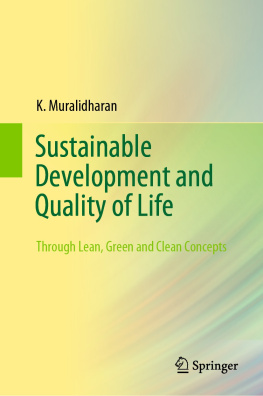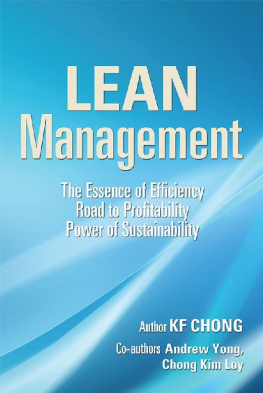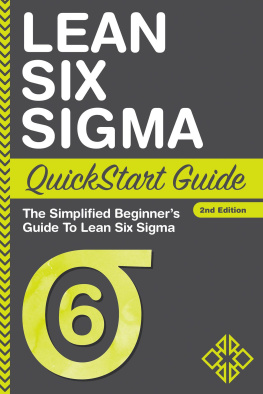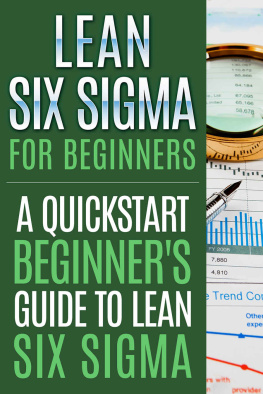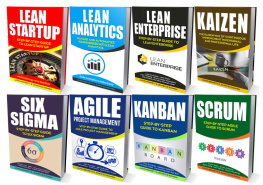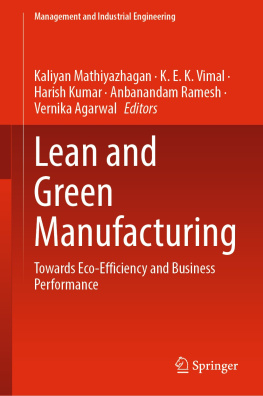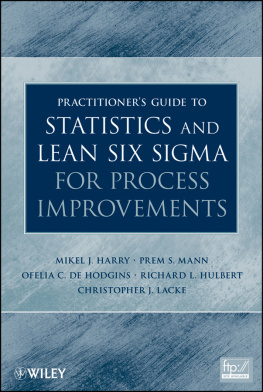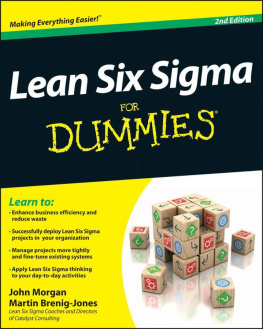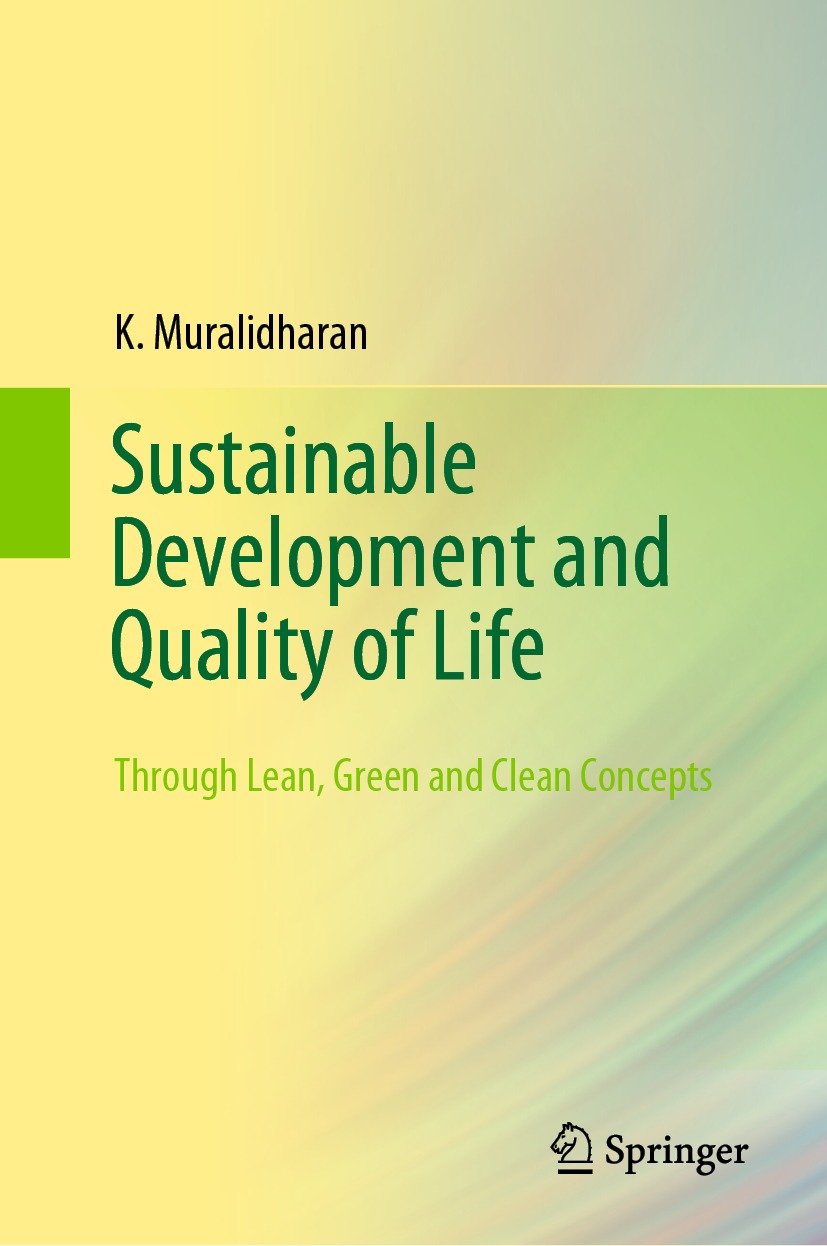K. Muralidharan
Faculty of Science, Maharaja Sayajirao University of Baroda, Vadodara, Gujarat, India
ISBN 978-981-16-1834-5 e-ISBN 978-981-16-1835-2
https://doi.org/10.1007/978-981-16-1835-2
The Editor(s) (if applicable) and The Author(s), under exclusive license to Springer Nature Singapore Pte Ltd. 2021
This work is subject to copyright. All rights are solely and exclusively licensed by the Publisher, whether the whole or part of the material is concerned, specifically the rights of translation, reprinting, reuse of illustrations, recitation, broadcasting, reproduction on microfilms or in any other physical way, and transmission or information storage and retrieval, electronic adaptation, computer software, or by similar or dissimilar methodology now known or hereafter developed.
The use of general descriptive names, registered names, trademarks, service marks, etc. in this publication does not imply, even in the absence of a specific statement, that such names are exempt from the relevant protective laws and regulations and therefore free for general use.
The publisher, the authors and the editors are safe to assume that the advice and information in this book are believed to be true and accurate at the date of publication. Neither the publisher nor the authors or the editors give a warranty, expressed or implied, with respect to the material contained herein or for any errors or omissions that may have been made. The publisher remains neutral with regard to jurisdictional claims in published maps and institutional affiliations.
This Springer imprint is published by the registered company Springer Nature Singapore Pte Ltd.
The registered company address is: 152 Beach Road, #21-01/04 Gateway East, Singapore 189721, Singapore
Preface
This book builds on simple concepts like Lean and Green concepts, which becomes an integral part of clean sciences and technologies. This author believes that everything in excess is wastes, whether it is energy, food, infrastructure, machinery, comforts, facilities, techniques, and so on. The environment, air, land, ecosystem, and climate are for all. Climate change issues and environmental problems are prevalent these days and pose various kinds of problems sustainable in our day-to-day lives. The lean principle advocates waste elimination and improve quality in process or product, and the Green concepts facilitate sustainable practices and promotions. Therefore, there is an immediate requirement to educate people to act positively towards the ill-effects of waste and pollution. I firmly believe that the Lean, Green and Clean concepts can facilitate a positive approach for a better quality of life.
The concept of writing this book was started when I was asked to design a course for an undergraduate foundational level program offered under Choice based credit system (CBCS) of our university, where students from any discipline can join and acquire credits. Foundational level courses are generally popular topics and offered to students for enriching their tastes and preference for skill development and personal excellence. I found a strong demand for teaching the students about the quality concepts to be practiced in their daily life, as other papers offered at the undergraduate program are not catering to these needs. The book can be used for any foundation or regular courses offered at any university irrespective of faculties and disciplines. The necessary ingredients are incorporated into this book. The book can attract a wider audience, including students, teachers, Quality professionals, management consultants, Lean, and Six Sigma professionals. Emphasis is laid on understanding and applying the concepts of quality through project management and measurement-based assessment methods.
There are plenty of books on Lean concepts available in the literature. Even Lean ideas are discussed as a part of Lean Six Sigma, Lean manufacturing, Six Sigma kind of philosophies as well. The authors book entitled Six Sigma for Organizational Excellence: A Statistical Approach also covers lean concepts to some extent. Most of the time, the discussion is centered around the Toyota Production System (TPS) only, as they are responsible for introducing Lean concepts way back in the 1980s. The author has also referred to some books written on Green ideas, discussing the importance of being sustainable in business and trade. The books by Keivan Zokaei A. (Creating a Lean and Green Business System: Techniques for Improving Profits and Sustainability, CRC, 2013) and Walter Crinnion (Clean, Green, and Lean: Get Rid of the Toxins That Make You Fat, Wiley, 2010) are closely related to the title of this book. The first book discusses the benefits of using Lean and green concepts through TPS, as mentioned above. The second book is written from a medical dietary point of view, where some lean ideas are used to reduce food intake and its usages. Almost all the literature offers how to improve productivity and efficiency in their service processes. None of the books attempts to make any recommendation for sustaining quality in personal or professional life. Hence, I do not find any reason to believe that there is any competition for this book. The proposed text is absolutely a deviation from many other books in terms of its concepts, methodology, and presentation. Along with improving business profits and growth, this book also offers productivity and quality improvement through sustainable and clean business practices.
Chapter presents the concepts of LGC. Note that, for improving customer relationships, improved profitability, and service/industrial/environment growth, the organizations should strive for best business practices in tandem with environmentally sustainable notions and practices. This is achieved through the development of LGC concepts. To increase the knowledge of the process, it is necessary to quantify the process variation inherent in the process. For quantitatively understanding the process variations, we discussed various measures of accuracy and precision in this chapter. The importance of process performance and process capability measures are also discussed in detail in this chapter.
The scientific and technological notions of LGC are presented in Chap.. Here, we understand the importance of Green energy, Green chemistry, Green supply chains, Green biology, etc., as they are the core components for managing products and services subject to climate and environmental change issues. We feel that the Learn, Green, and clean methods can potentially recover energy, manage solid and liquid wastes, and facilitate renewable energy requirements for future generations.
A detailed discussion on various quality improvement methods like Total Quality Management (TQM), Total Productive Maintenance (TPM), Kaizen, 5S+ Safety and Security Techniques, 3M Techniques, Poka Yoke, Set up Reduction, Just-in-Time Approach, Kanban, Six Sigma concepts, Capability Maturity Model Integration (CMMI), etc. are presented in Chap.. The improvement tools are critically examined for their relevance in pursuit of LGC concepts. Among all improvement methods, Six Sigma supports various tenets of quality improvement by reducing variation and waste. Hence, it is considered to be one of the powerful tools for recovering Return on Investment (ROI) and maximizing the process quality.

